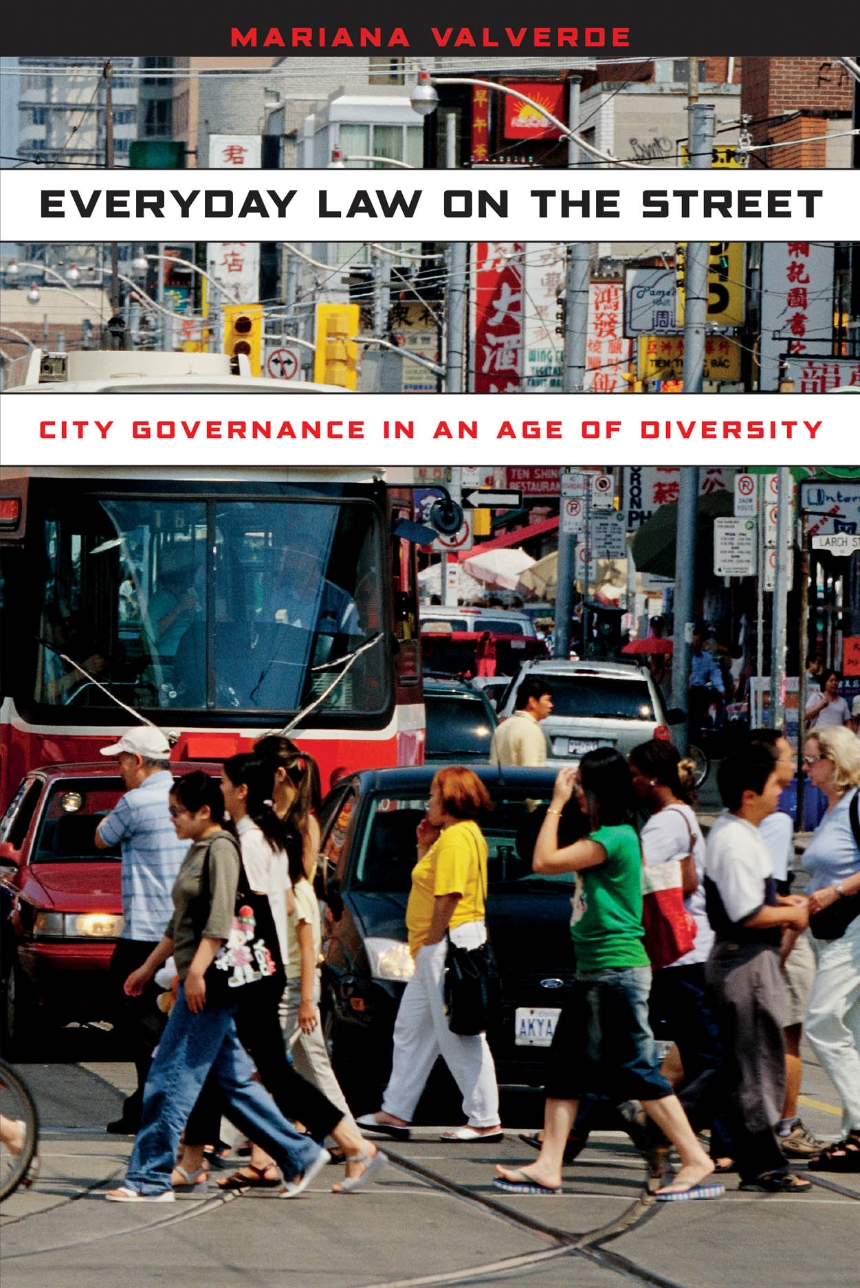Everyday Law on the Street
City Governance in an Age of Diversity
Toronto prides itself on being “the world’s most diverse city,” and its officials seek to support this diversity through programs and policies designed to promote social inclusion. Yet this progressive vision of law often falls short in practice, limited by problems inherent in the political culture itself. In Everyday Law on the Street, Mariana Valverde brings to light the often unexpected ways that the development and implementation of policies shape everyday urban life.
Drawing on four years spent participating in council hearings and civic association meetings and shadowing housing inspectors and law enforcement officials as they went about their day-to-day work, Valverde reveals a telling transformation between law on the books and law on the streets. She finds, for example, that some of the democratic governing mechanisms generally applauded—public meetings, for instance—actually create disadvantages for marginalized groups, whose members are less likely to attend or articulate their concerns. As a result, both officials and citizens fail to see problems outside the point of view of their own needs and neighborhood.
Taking issue with Jane Jacobs and many others, Valverde ultimately argues that Toronto and other diverse cities must reevaluate their allegiance to strictly local solutions. If urban diversity is to be truly inclusive—of tenants as well as homeowners, and recent immigrants as well as longtime residents—cities must move beyond micro-local planning and embrace a more expansive, citywide approach to planning and regulation.
272 pages | 1 table | 6 x 9 | © 2012
Chicago Series in Law and Society
Law and Legal Studies: Law and Society
Political Science: Urban Politics
Sociology: Urban and Rural Sociology
Reviews
Table of Contents
Acknowledgments
Chapter 1. Introduction
Chapter 2. The Law of the Street Corner
Chapter 3. The Legal Regulation of Taste: Annoying Noises, Unkempt Yards, and the “Quality and Tranquility of Life”
Chapter 4. City Bureaucrats and Village Elders: The Dysfunctional Dance of Local Governance
Chapter 5. Law without Rights: Zoning, Poverty, and the Normative Family Home
Chapter 6. “Putting Diversity on the Menu”: The Municipal Corporation and the Micromanagement of Street Life
Chapter 7. Driving a Taxi: City Fathers’ Myth of Immigrant Self-Employment
Chapter 8. From Local to Global and Back Again: Mosques and the Politics of Local Planning
Chapter 9. The Death of Planning and the Challenges of Diversity: Concluding Reflections
Notes
Index
Chapter 1. Introduction
Chapter 2. The Law of the Street Corner
Chapter 3. The Legal Regulation of Taste: Annoying Noises, Unkempt Yards, and the “Quality and Tranquility of Life”
Chapter 4. City Bureaucrats and Village Elders: The Dysfunctional Dance of Local Governance
Chapter 5. Law without Rights: Zoning, Poverty, and the Normative Family Home
Chapter 6. “Putting Diversity on the Menu”: The Municipal Corporation and the Micromanagement of Street Life
Chapter 7. Driving a Taxi: City Fathers’ Myth of Immigrant Self-Employment
Chapter 8. From Local to Global and Back Again: Mosques and the Politics of Local Planning
Chapter 9. The Death of Planning and the Challenges of Diversity: Concluding Reflections
Notes
Index
